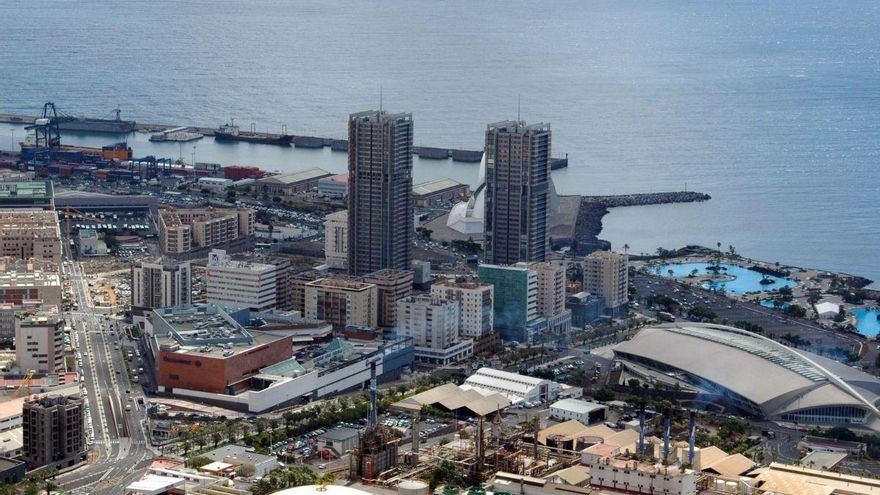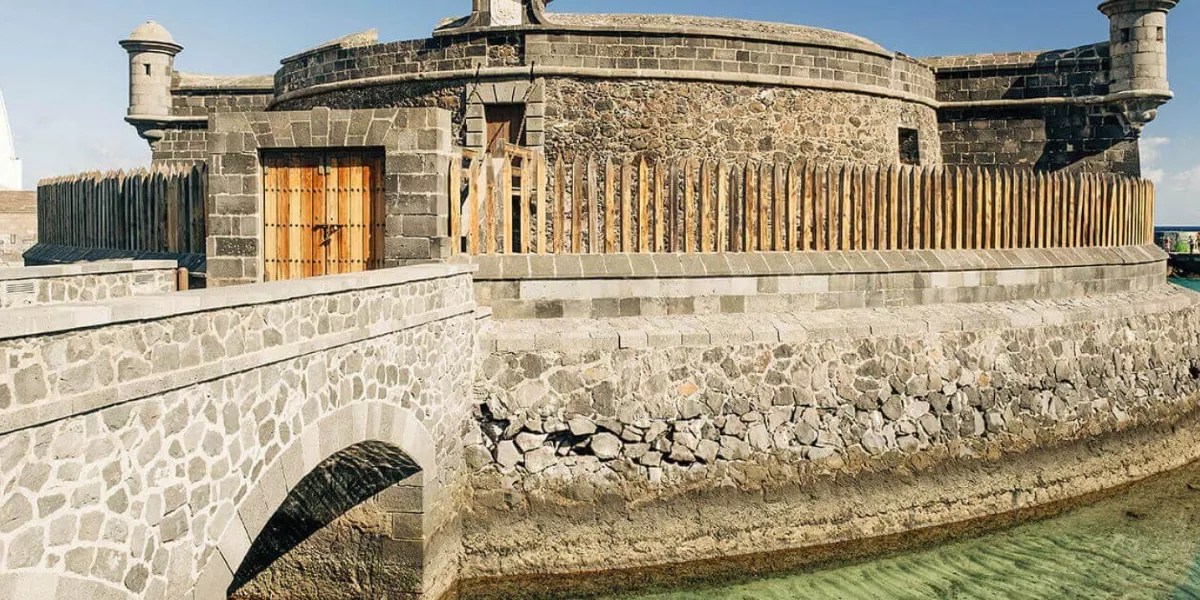The Santa Cruz Verde 2030 project, a mega urban plan in the heart of the capital of Tenerife to occupy 576,000 square meters of the old refinery, boasts of projecting high percentages of green spaces, residential areas and hotel beds for the city. It is “the largest operation [de este calibre] in Spain”, according to the Councilor for Public Services, Environment and European Projects of the Santa Cruz City Council, Carlos Tarife (PP), and also hopes to design a “more balanced and sustainable” town. But like many other initiatives of the same nature, it will also bring speculation, expulsion of the local population and increase the cost of living, according to Marcus Hübscher, a doctor in Urban Planning from the University of Leipzig (Germany).

Santa Cruz de Tenerife, the largest transformation of a Spanish capital that has begun “behind closed doors”
Further
This German geographer has been studying the planning process for Santa Cruz Verde 2030 for years. On some occasions, he has already spoken about the “opacity” of it; how actors and promoters do not agree on some points of the operation; and also that it will cause a massive arrival of tourists and vacation rentals. On this occasion, in a new chapter of his research published in the journal SpringerHübscher studies the similarities and differences between this plan and that of Cabo Llanos, begun in the 90s also in Santa Cruz de Tenerife and which, like the most immediate one, represented a before and after in the urban planning of the capital of Tenerife.
“Both [planes] They are going to be very similar in their consequences. Because in Cabo Llanos we saw gentrification and more tourism. And in Santa Cruz Verde 2030 I think that will also happen, what happens is that there is a mask, a very good one, that is hiding these negative things,” explains the geographer in an interview for Canary Islands Now.
As in the rest of the investigation, Hübscher has analyzed the 18 interviews carried out with both the interested parties, the members of the City Council and CEPSA, the management company of the refinery, as well as a wide range of secondary actors, including neighborhood organizations, real estate agencies, scientists, architects or relevant political parties. The geographer’s objective was to analyze whether the planners of Santa Cruz Verde 2030classified by the expert as a “megaproject” (this is also how he defines the Guggenheimin Bilbao, or The City of Arts and Sciences, in Valencia), they have learned from other similar operations, such as the one carried out in Cabo-Llanos in the same area. And the answer is yes, but with nuances.
Hübscher considers that Santa Cruz Verde 2030 is essentially different from the Cabo Llanos plan because it plans to build green spaces in 41% of the action unit, something that the previous operation did not do and that has been one of its “most obvious deficits.” according to the expert. However, this commitment to urban gardens and parks hides “a hidden business logic” that entails “the revaluation of adjacent neighborhoods.” Basically, the geographer argues that the price of homes attached to these areas will increase considerably, preventing local residents from buying one and causing a process of “green gentrification.” seen in other places in the worldaccording to studies.
“It is paradoxical, because in all cities we need more green spaces [en Santa Cruz de Tenerife, de hecho, el 79,39% de la población vive en áreas donde menos de un cuarto de la superficie presenta cobertura vegetal, según el Instituto de Salud Global de Barcelona]. But when you have an apartment next to a park, the value is much higher. And now with this operation that is going to be outrageous,” says Hübscher.
For the geographer, the planners of Santa Cruz Verde 2030, which should begin work after the final approval of the city’s General Planning Plan (PGO), still in process, apply a strategy of framing the initiative under the objectives of habitability, sustainability and equity. But he believes that this is more of a “mask” that will reproduce “old” spatial injustices, like the views in Cabo Llanos.
There, according to a investigation released in 2003, there was a “process of elitization” after the remodeling project of previously industrial land. The entry into the market of large real estate groups contributed to making it “the most expensive area of the city” and “the expropriations and demolitions of properties caused a real population emptying of the area.” The urban plan of Cabo-Llanos occupies an area of more than one million square meters, has several shopping centers, high-rise buildings and housing blocks and had the objective of “building a new representative urban center” for the citizens of the Tenerife capital. But 17 of the 18 actors consulted by Hübscher criticize it for being a kind of “bedroom development” and exuding a “sterile atmosphere.”

One of the main problems in Cabo Llanos, furthermore, is the shortage of public spaces. The action plans to develop several, but has not done so in the 30 years of validity of the PGO of 1992, still in force. The Los Llanos Neighborhood Association has repeatedly demanded a solution for “urban planning non-compliance” and considers, in words collected by Hübscher in his study, that the infrastructures of the place, such as the Tenerife Adán Martín Auditorium or the Fairgrounds, “were designed exclusively for a regional or even international target audience (…), while they were neglected the local needs of the inhabitants.
In Santa Cruz Verde 2030, the main intention is for public land to occupy 67% of the available surface: 41% for green areas, 10% for facilities and 16% for other purposes; The remaining 33% will be for hotels (10%), private facilities (2%) and residential rentals (21%). The latter has also occupied the German geographer’s time, especially since Santa Cruz de Tenerife is a town with tension in the housing market and leads, by way of illustration, the classification of Spanish municipalities with more than 200,000 inhabitants. with the highest percentage of empty houses (17.3%).
“Before I was talking about the apartments that are already there, like in the Chamberí or Buenos Aires neighborhoods. But the thing is that the new homes that are going to be built… Let’s see if they are social or not. In the approach it is written that they may be affordable. But the same had also been said for Cabo-Llanos. The experts I have spoken to, including a woman with more than 40 years of experience, tell me with complete certainty that there will be speculation”says Hübscher. It is worth remembering that the majority shareholder of CEPSA is Mubadala Investment Company, the sovereign fund of Abu Dhabi, with a portfolio of services specialized in energy infrastructure and the real estate market.

In summary, the author of the study believes that Santa Cruz Verde 2030 differs from the Cabo Llanos plan in that it proposes “a much greater importance of public spaces [también planifica la creación de una playa en la costa, una demanda social de la población capitalina], a sustainable approach and a seemingly less elitist residential use.” However, the existence of such lessons “does not necessarily go hand in hand with greater sustainability,” considers Hübscher, but rather “shows the ambition of each of the interested parties to achieve their objectives more efficiently.”
In this sense, the German geographer observes that “old” dynamics are being reproduced. And he sees green gentrification as “a stealthy process that contributes to a future environmental injustice”. “There is an erosion of democratic understandings, which is visible in planning [de este proyecto] since the secondary actors do not participate. (…) With expectations so high, it will be a challenge to meet the objectives of Santa Cruz Verde 2030 as the city’s panacea,” emphasizes the expert.















